Detection of Water Surface Acoustic Waves Using Sinusoidal Phase Modulation Interferometer and Prenormalized PGC-Arctan Algorithm
Abstract
1. Introduction
2. Principle of Water Surface Acoustic Wave Detection Using a Laser Interferometer
3. PGC-Arctan Demodulation Based on Prenormalization and Lissajous Ellipse Fitting
3.1. The Estimation Algorithm for Phase Modulation Depth
3.2. The Estimation Algorithm for Carrier Phase Delay
3.3. The PGC-Arctan Demodulation Algorithm Based on Prenormalization and Lissajous Ellipse Fitting
4. Simulation Analysis
5. Water Surface Acoustic Wave Detection Experiment
5.1. Stable-Frequency and Stable-Amplitude Water Surface Acoustic Wave Detection Experiment
5.2. Experiment on Amplitude Detection of Water Surface Acoustic Waves
5.3. Amplitude Modulated Water Surface Acoustic Wave Detection Experiment
6. Conclusions
- (1)
- Due to the nonideality on interferometric signal parameters, such as the gain difference between two low-pass filters and the nonideal phase modulation depth, the Lissajous figure generated by an actual interferometric detection signal of water surface acoustic waves may not be a normal circle or ellipse, but, rather, an ellipse with unequal major and minor axes. The fluctuation of the depth of phase modulation causes local nonuniform widening of the Lissajous ellipse. Changes in interference signal visibility lead to uniform widening of the Lissajous ellipse; consequently, the inner and outer envelope ellipses of the Lissajous figure have the same axial ratio.
- (2)
- The proposed demodulation algorithm utilizes the intensity information in multiple spectral bands of interference signals to calculate the phase modulation depth C. By introducing quadrature carrier signals, it achieves estimation of the carrier phase delay Vc. Furthermore, the algorithm constructs coefficients J1(C)cos(Vc) and J2(C)cos(2Vc) for prenormalization of quadrature interference signal components. This method effectively eliminates the phenomenon of local nonuniform or abnormal widening of the Lissajous ellipse. By extracting and fitting the outer contour ellipse and inner contour ellipse of a Lissajous figure, the axial ratio is obtained. Numerical simulation results demonstrate that using this ratio for completely normalizing quadrature interference signals effectively eliminates nonlinear errors caused by different filter gain factors in arctan phase demodulation.
- (3)
- Utilizing a sinusoidal phase modulation laser interferometer and the proposed demodulation algorithm, experiments were conducted to detect multiple sets of water surface acoustic waves induced by underwater acoustic radiation. The typical value of signal-to-noise distortion ratio of the demodulation results can reach 20 dB at 500 Hz. The experimental results demonstrate that the proposed method and system can effectively and accurately measure weak water surface acoustic waves. The prenormalized PGC-Arctan demodulation algorithm proposed in this paper exhibits significant advantages in signal-to-noise distortion ratio compared to traditional demodulation algorithms, and shows the benefit of combined use of prenormalization and Lissajous ellipse fitting for demodulation.
Author Contributions
Funding
Data Availability Statement
Conflicts of Interest
References
- Zhang, L.; Zhang, X.; Tang, W. Amplitude measurement of weak sinusoidal water surface acoustic wave using laser interferometer. Chin. Opt. Lett. 2015, 13, 091202. [Google Scholar] [CrossRef]
- Romero, M.R.; Narayanan, R.M.; Lenzing, E.H.; Brown, D.C.; Greenert, K.L. Wireless underwater-to-air communications via water surface modulation and radar detection. Proc. SPIE 2020, 11408, 58–71. [Google Scholar]
- Shaydurov, G.Y.; Luk’Yanchikov, V.N.; Romanova, G.N. On the Ultrasonic Parametric Modulation of an Eletromagnetic Wave at the Boundary between Water and Air. Sov. J. Commun. Technol. Electron. 1986, 31, 54–60. [Google Scholar]
- Churnside, J.H.; Bravo, H.E.; Naugolnykh, K.A.; Fuks, I.M. Effects of underwater sound and surface ripples on scattered laser light. Acoust. Phys. 2008, 54, 204–209. [Google Scholar] [CrossRef]
- Zhang, X.; Mao, H.; Tang, W. Demodulation technique based on laser interference for weak photo-acoustic signals on water surface. Appl. Sci. 2018, 8, 2423. [Google Scholar] [CrossRef]
- Land, P.; Roeder, J.; Robinson, D.; Majumdar, A. Application of a laser Doppler vibrometer for air-water to subsurface signature detection. Proc. SPIE 2015, 9461, 478–490. [Google Scholar]
- Land, P.; Majumdar, A.K. Demonstration of adaptive optics for mitigating laser propagation through a random air-water interface. Proc. SPIE 2016, 9827, 14–21. [Google Scholar]
- Blackmon, F.; Antonelli, L.T. Acousto-optic Comm Links Underwater and In-air Platforms: Developing a Laser-based Technology to Allow a Unique Means of Communication Across Air-water Boundary Lines. Sea Technol. 2004, 45, 58–66. [Google Scholar]
- Wang, Y.M.; Miao, R.C. The asymmetric distribution of diffraction field with different frequencies of underwater acoustic signal. Optik 2016, 126, 5886–5889. [Google Scholar] [CrossRef]
- Miao, R.; Wang, Y.; Meng, F.; Ma, J. Optical measurement of the liquid surface wave amplitude with different intensities of underwater acoustic signal. Opt. Commun. 2014, 313, 285–289. [Google Scholar] [CrossRef]
- Ren, Y.; Miao, R.; Su, X.; Chen, H. Visualizing detecting low-frequency underwater acoustic signals by means of optical diffraction. Appl. Opt. 2016, 55, 2018–2023. [Google Scholar] [CrossRef]
- Antonelli, L.; Blackmon, F. Experimental demonstration of remote, passive acousto-optic sensing. J. Acoust. Soc. Am. 2004, 116, 3393–3403. [Google Scholar] [CrossRef]
- Blackmon, F.; Antonelli, L.T. Opto-acoustic Downlink Underwater Communication –Remote, Aerial, Trans-layer Communications –A Revolutionary Enabling Capability. Sea Technol. 2007, 48, 31–35. [Google Scholar]
- Blackmon, F.; Estes, L.; Fain, G. Linear Optoacoustic Underwater Communication. Appl. Opt. 2005, 44, 3833–3845. [Google Scholar] [CrossRef]
- Farrant, D.; Burke, J.; Dickinson, L.; Fairman, P.; Wendoloski, J. Opto-acoustic underwater remote sensing (OAURS)—An optical sonar? In Proceedings of the OCEANS’10 IEEE SYDNEY, Sydney, Australia, 24–27 May 2010; pp. 1–7. [Google Scholar]
- Zhao, L.; Zhang, J. Expanding research on laser coherent detection of underwater sound source. Optik 2017, 139, 145–151. [Google Scholar] [CrossRef]
- Zhang, L.S.; Zhang, X.L.; Tang, W.Y. Detection of water surface capillary wave by analysis of turning-point local signal data using a laser interferometer. Chin. Opt. Lett. 2017, 15, 071201. [Google Scholar] [CrossRef][Green Version]
- Christian, T.R.; Frank, P.A.; Houston, B.H. Real-time analog and digital demodulator for interferometric fiber optic sensors. Proc. SPIE 1994, 2191, 324–336. [Google Scholar]
- Dandridge, A.; Tveten, A.; Giallorenzi, T. Homodyne demodulation Scheme for fiber optic sensors using phase generated carrier. IEEE J. Quantum Electron. 1982, 18, 1647–1653. [Google Scholar] [CrossRef]
- Zhang, S.; Zhang, A.L.; Pan, H.G. Eliminating light intensity disturbance with reference compensation in interferometer. IEEE Photonics Technol. Lett. 2015, 27, 1888–1891. [Google Scholar] [CrossRef]
- Zhang, A.; Li, D. Interferometric sensor with a PGC-AD-DSM demodulation algorithm insensitive to phase modulation depth and light intensity disturbance. Appl. Opt. 2018, 57, 7950–7955. [Google Scholar] [CrossRef] [PubMed]
- He, J.; Wang, L.; Li, F.; Liu, Y. An ameliorated phase generated carrier demodulation algorithm with low harmonic distortion and high stability. J. Light. Technol. 2010, 28, 3258–3265. [Google Scholar]
- Yu, Z.; Dai, H.; Zhang, M.; Zhang, J.; Liu, L.; Jin, X.; Luo, Y. High stability and low harmonic distortion PGC demodulation technique for interferometric optical fiber sensors. Opt. Laser Technol. 2019, 109, 8–13. [Google Scholar] [CrossRef]
- Qu, Z.; Guo, S.; Hou, C.; Yang, J.; Yuan, L. Real-time self-calibration PGC-Arctan demodulation algorithm in fiber-optic interferometric sensors. Opt. Express 2019, 27, 23593–23609. [Google Scholar] [CrossRef] [PubMed]
- Zhang, L.; Kong, W.; Wang, M.; Li, R.; Wang, Y. An interferometric vibrometer using phase carrier generated by liquid surface acoustic waves and an improved phase demodulation scheme. Opt. Commun. 2021, 495, 127114. [Google Scholar] [CrossRef]


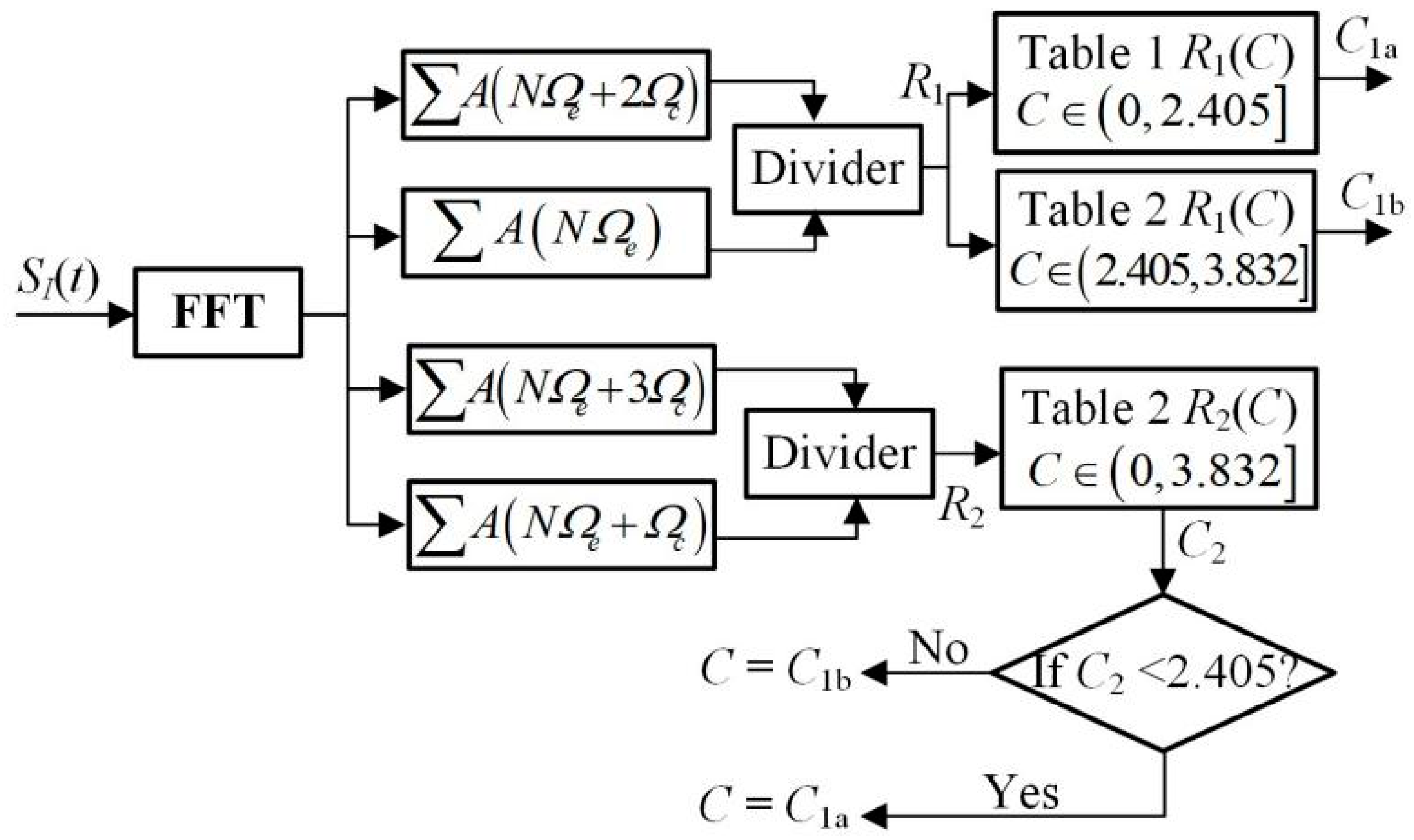

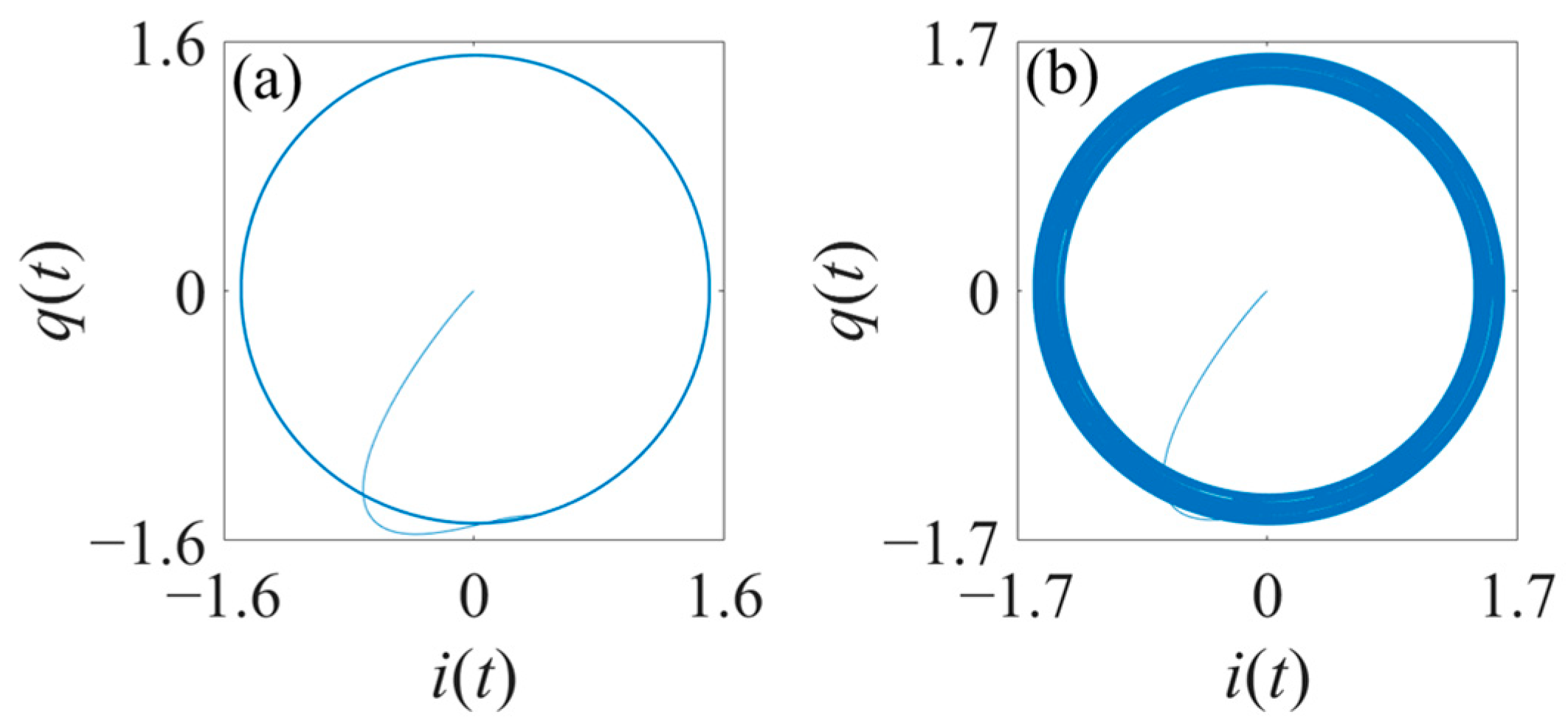

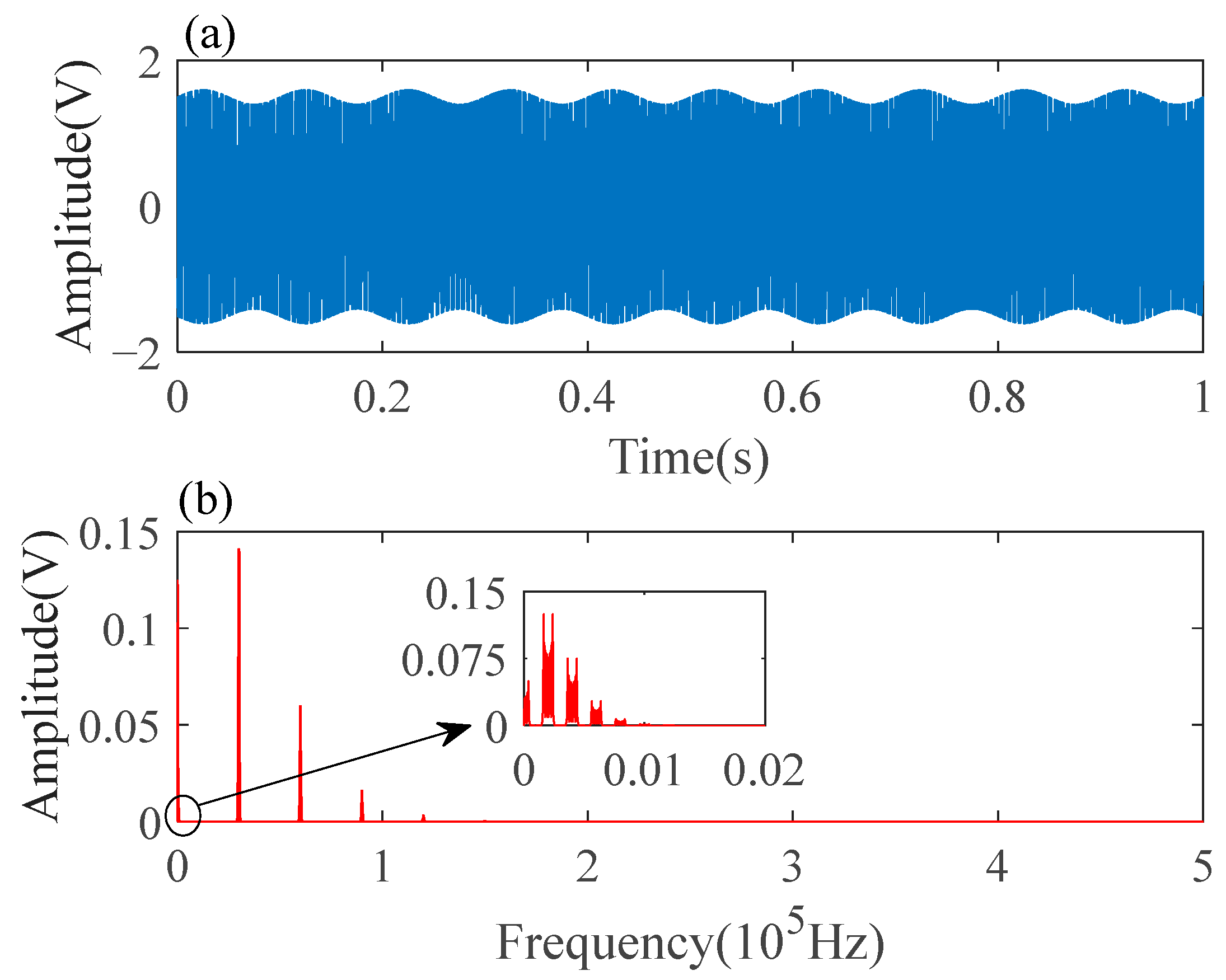
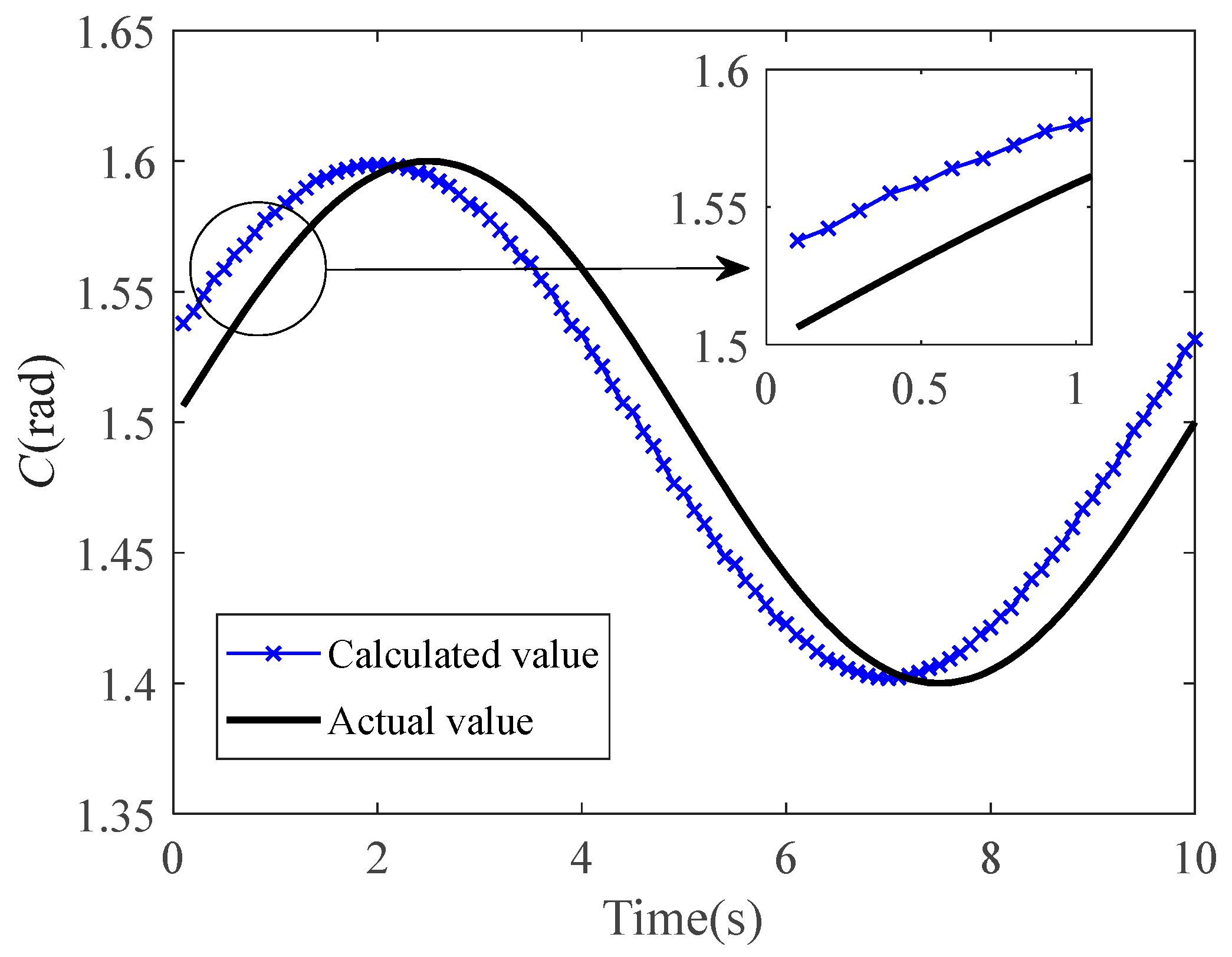
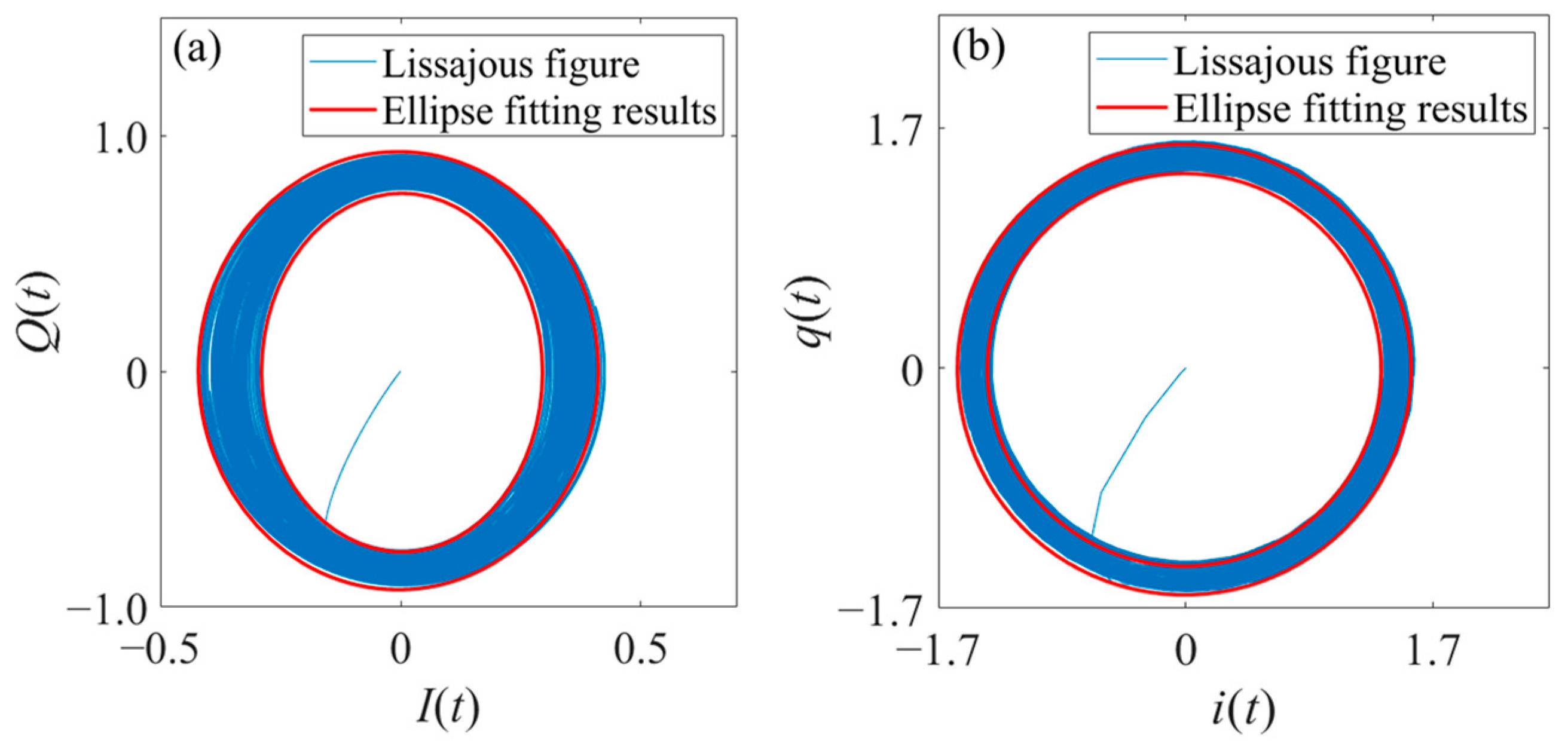
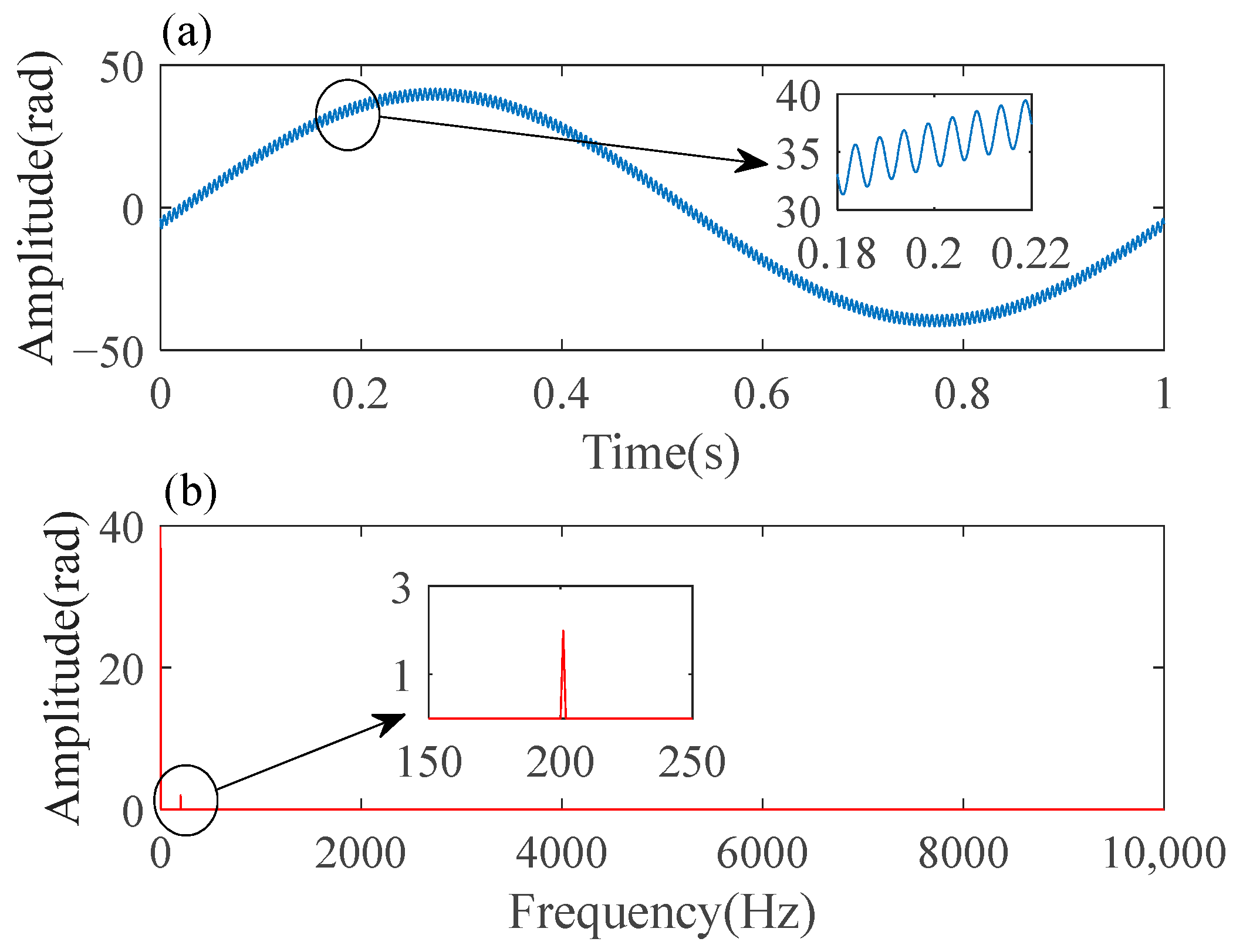
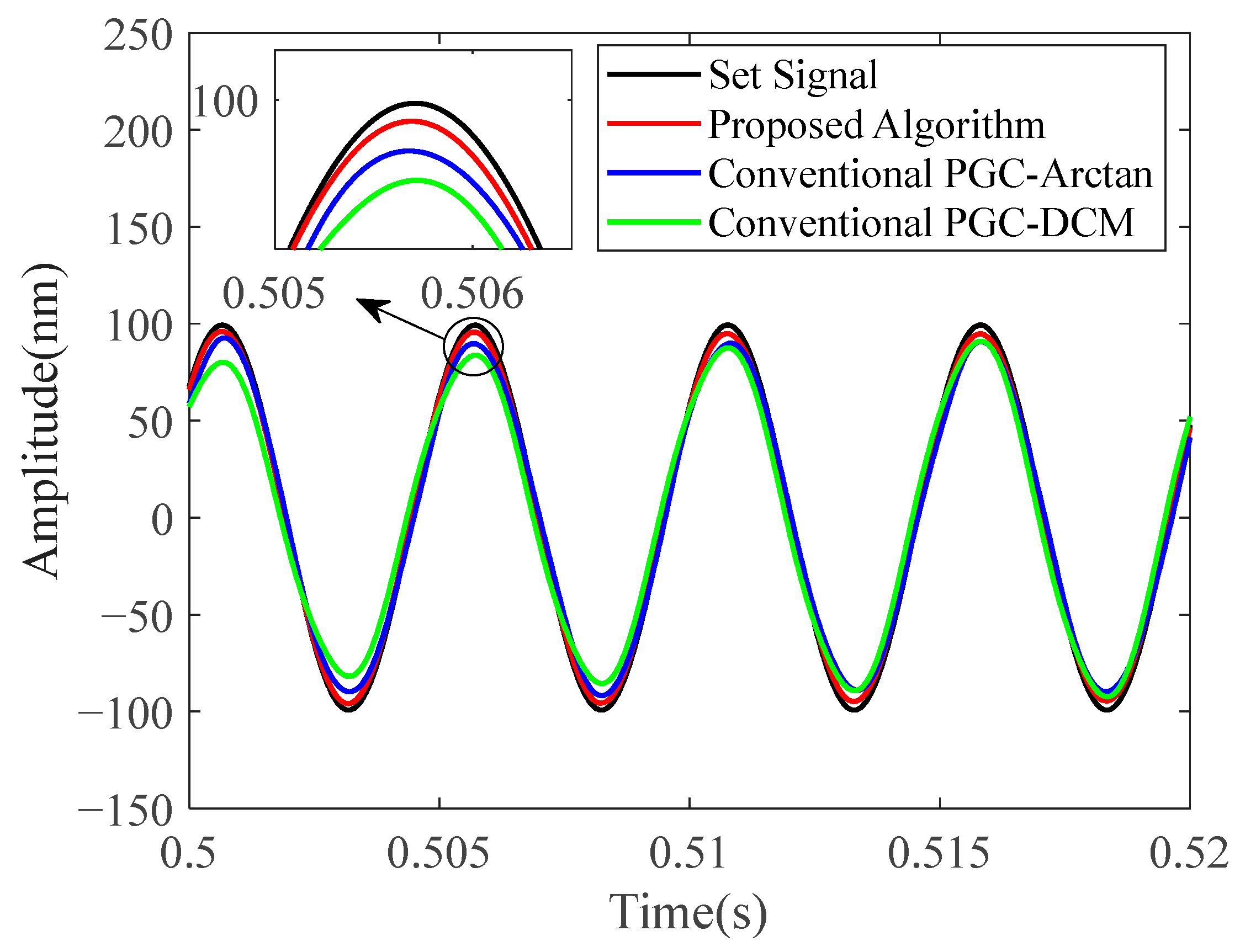

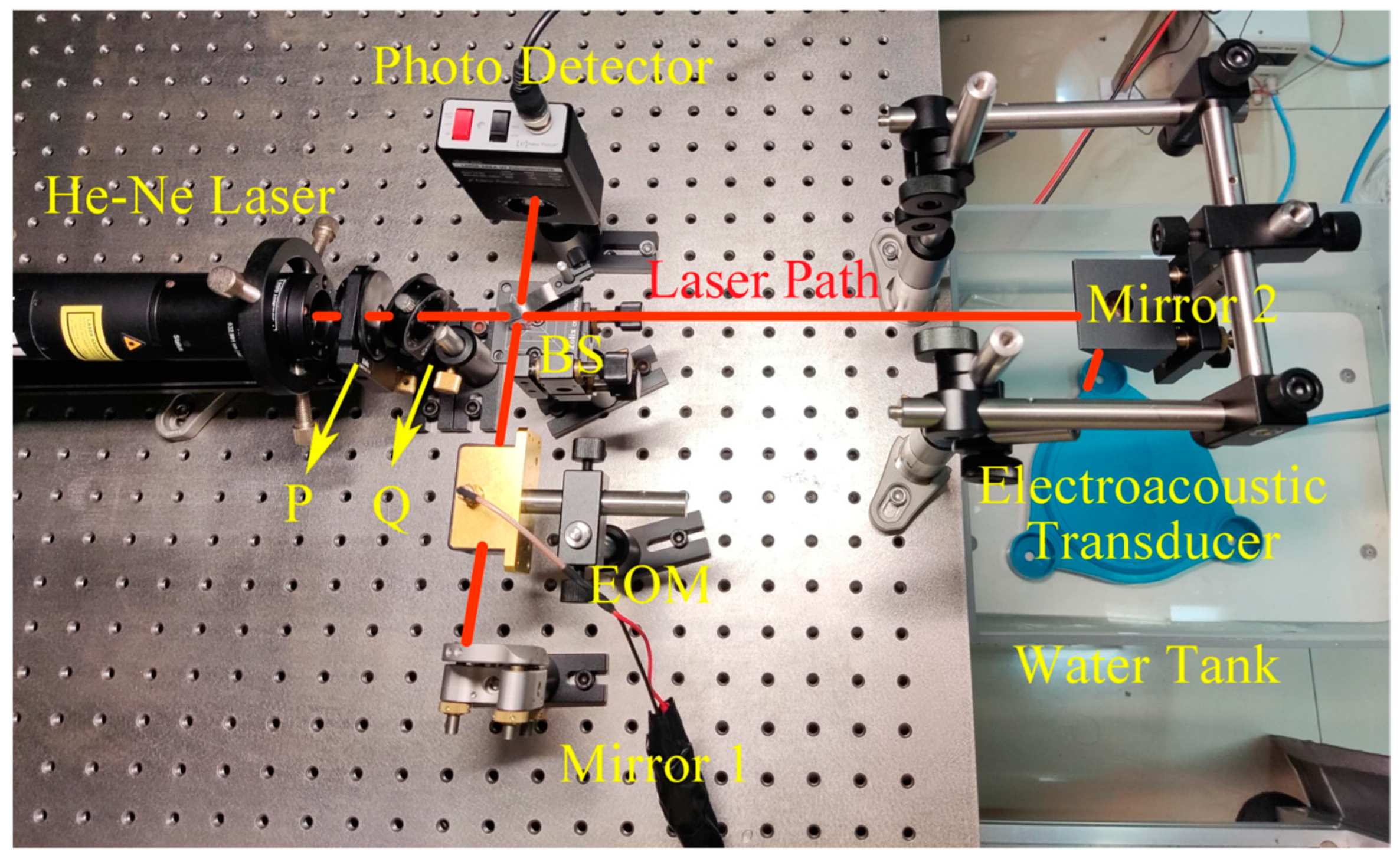
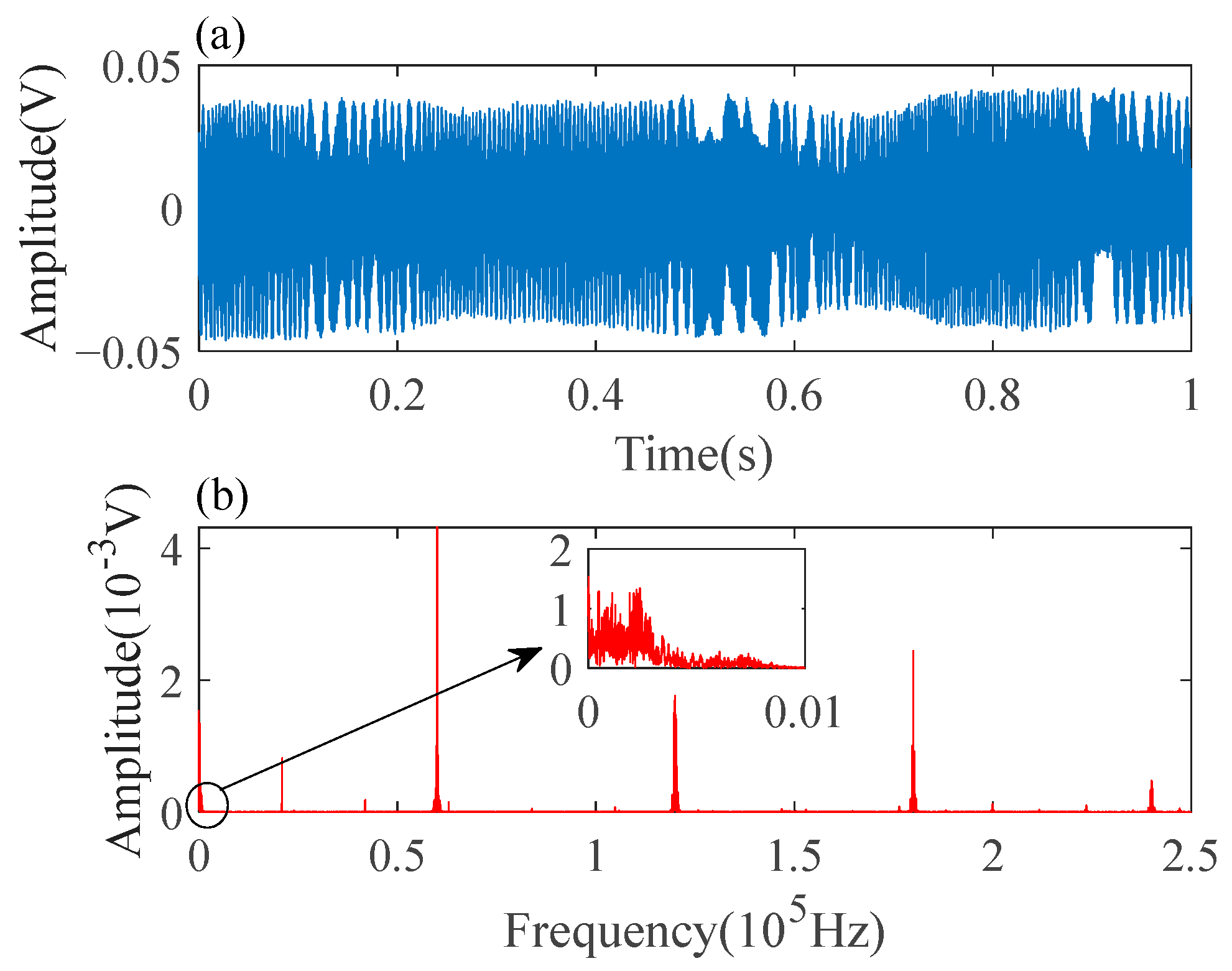
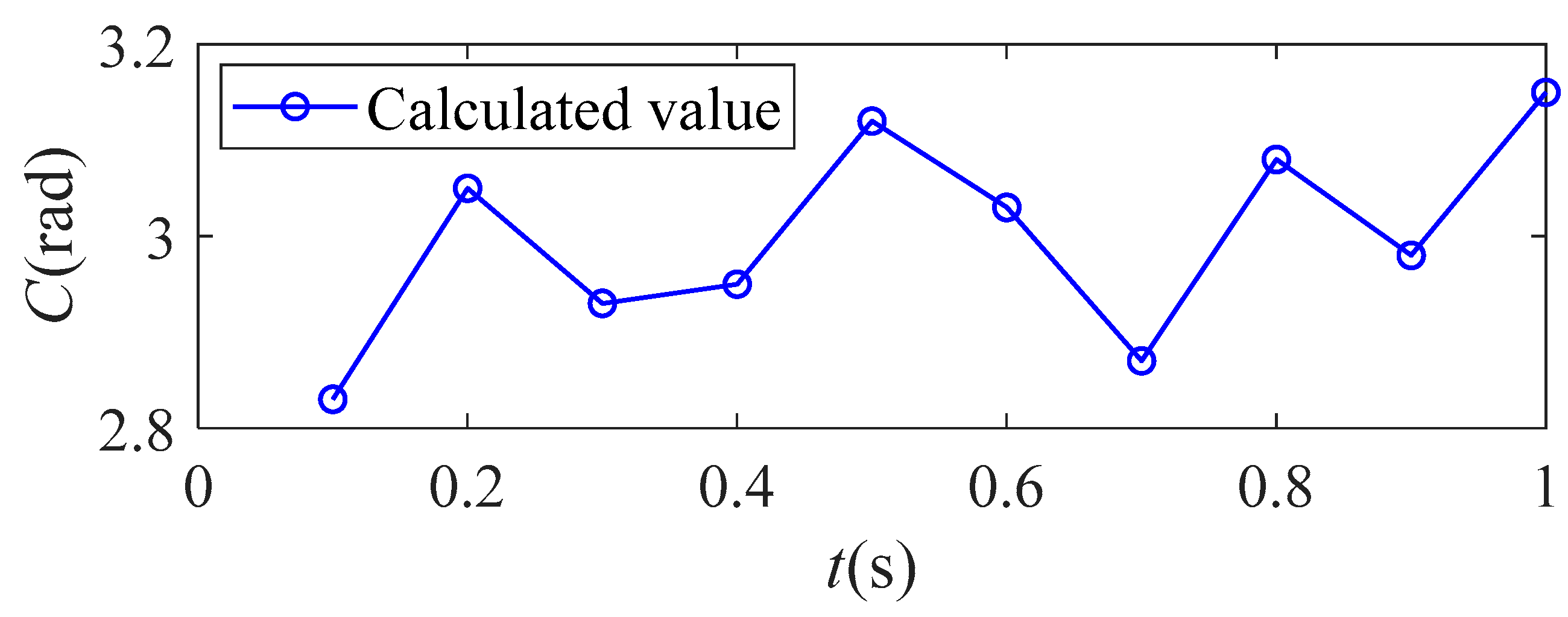
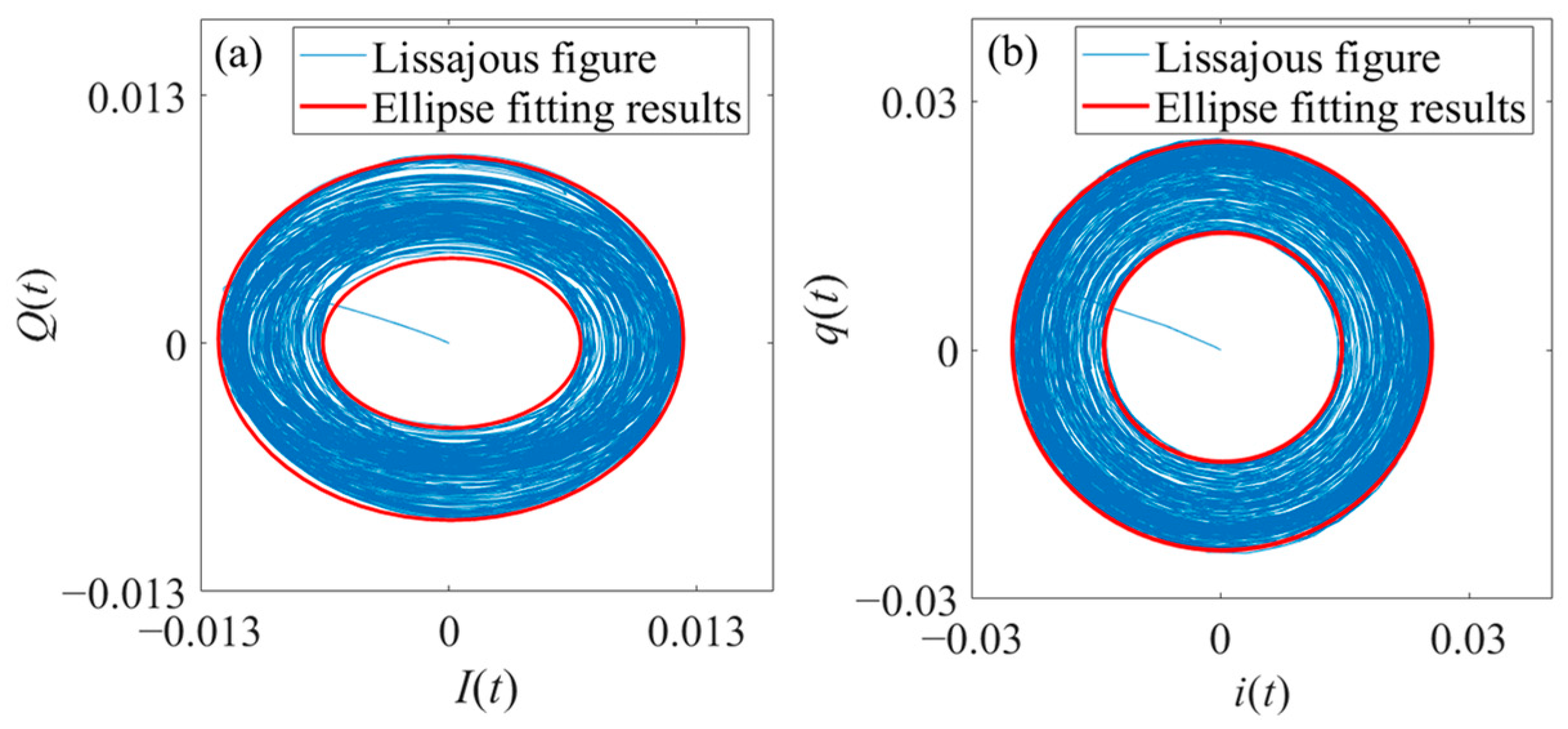

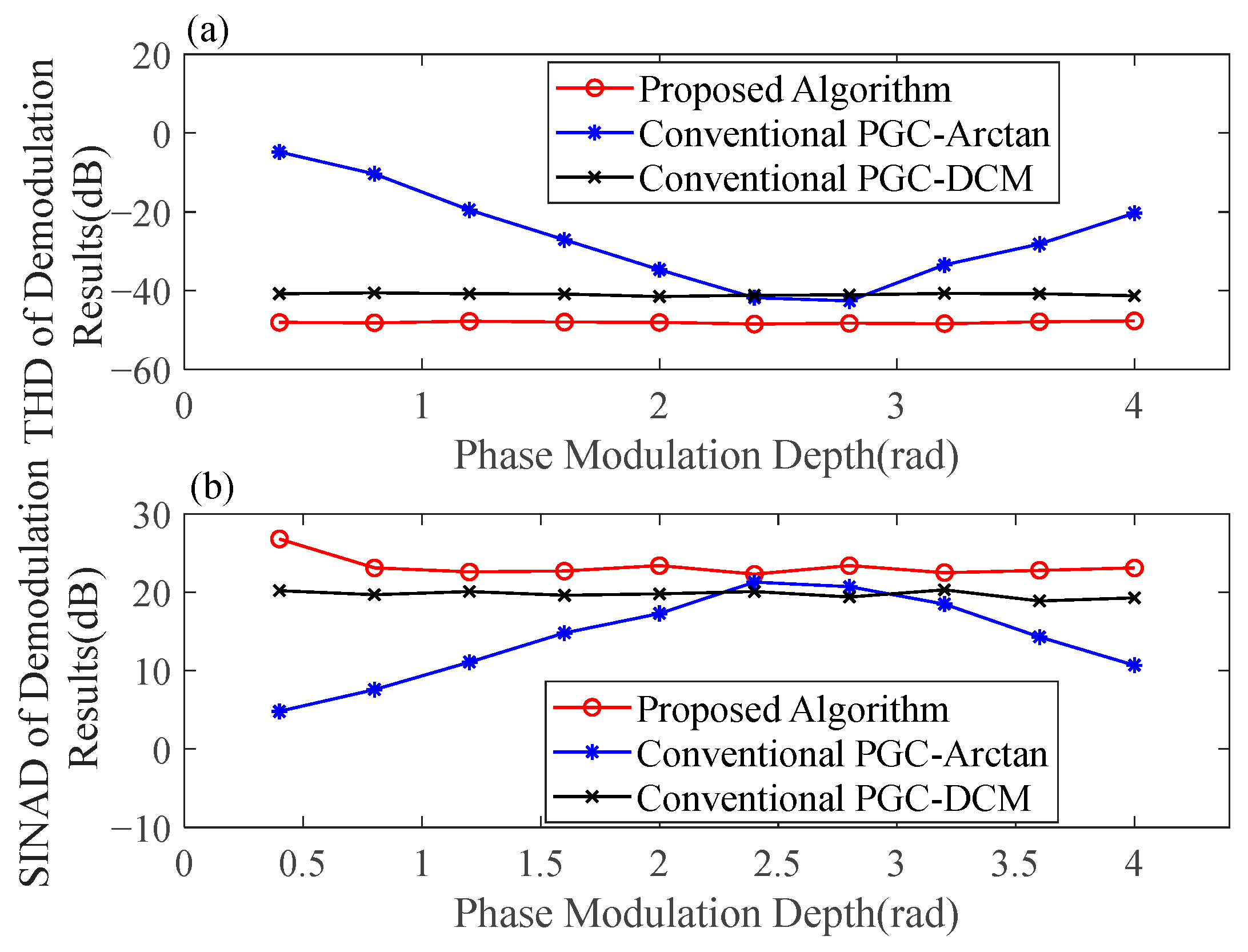
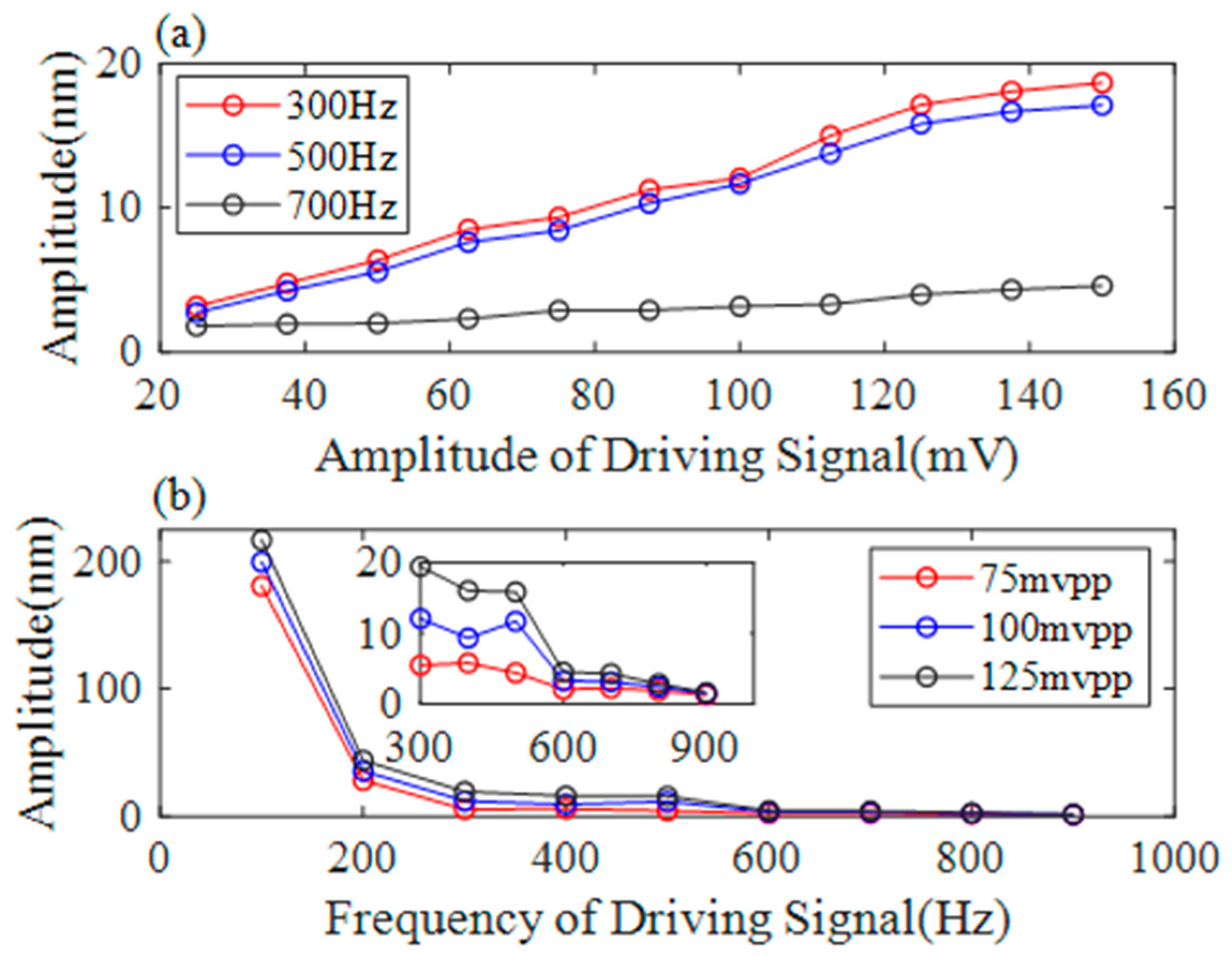
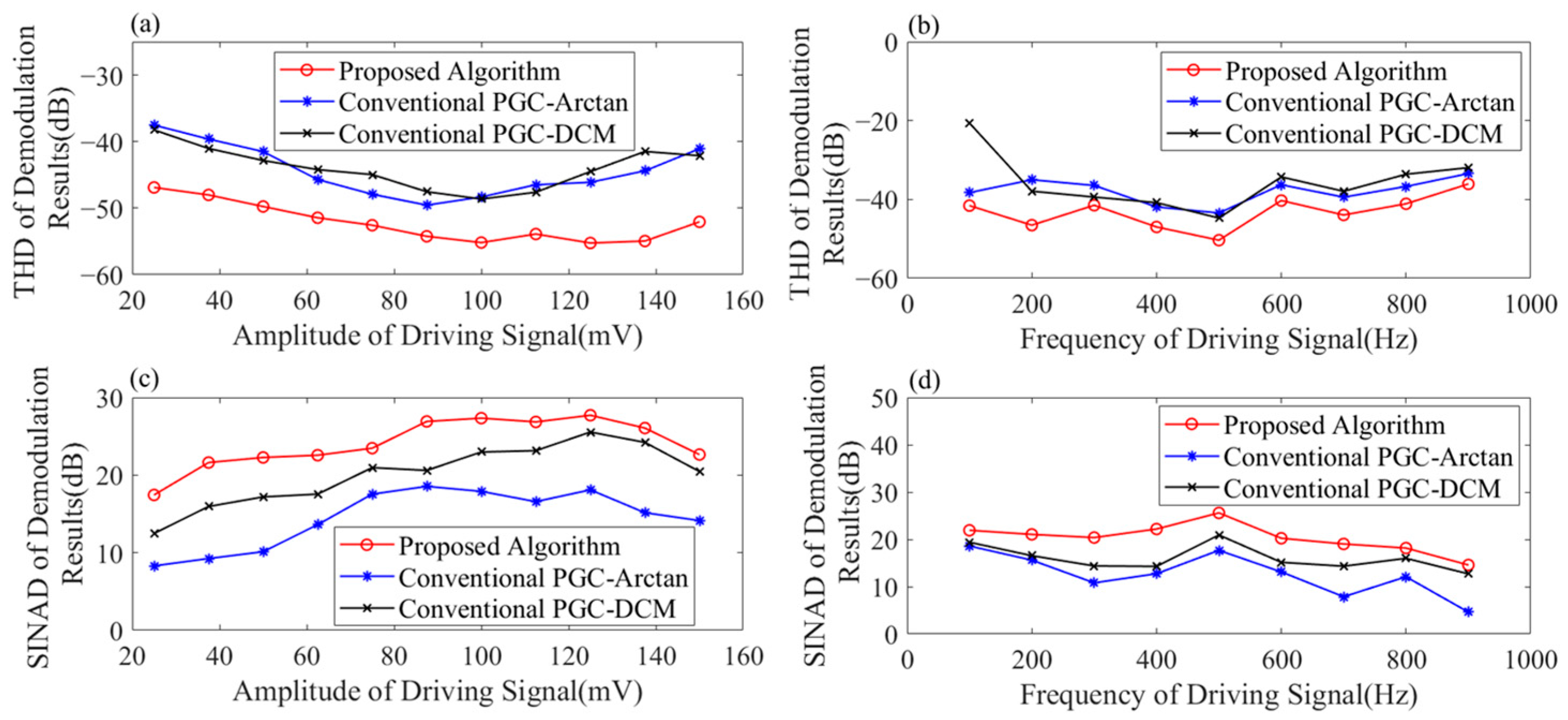

| No. | Parameter | Value |
|---|---|---|
| 1 | fs | 1,000,000 Hz |
| 2 | Ωc | 60,000π rad |
| 3 | k | 0.0099 rad/nm |
| 4 | C | 1.5 + 0.1sin(0.2πt) rad |
| 5 | Vc | 0.4π rad |
| 6 | B0 | 1.5 + 0.1sin(20πt) |
| 7 | Cs | 200k rad |
| 8 | Ωs | 400π rad |
| 9 | φs | 0.35 rad |
| 10 | Ce | 4000k rad |
| 11 | Ωe | 2π rad |
| 12 | L0 | 0.25π rad |
Disclaimer/Publisher’s Note: The statements, opinions and data contained in all publications are solely those of the individual author(s) and contributor(s) and not of MDPI and/or the editor(s). MDPI and/or the editor(s) disclaim responsibility for any injury to people or property resulting from any ideas, methods, instructions or products referred to in the content. |
© 2024 by the authors. Licensee MDPI, Basel, Switzerland. This article is an open access article distributed under the terms and conditions of the Creative Commons Attribution (CC BY) license (https://creativecommons.org/licenses/by/4.0/).
Share and Cite
Zhang, L.; Fang, W.; Yang, L.; Chen, J.; Li, X. Detection of Water Surface Acoustic Waves Using Sinusoidal Phase Modulation Interferometer and Prenormalized PGC-Arctan Algorithm. Photonics 2024, 11, 200. https://doi.org/10.3390/photonics11030200
Zhang L, Fang W, Yang L, Chen J, Li X. Detection of Water Surface Acoustic Waves Using Sinusoidal Phase Modulation Interferometer and Prenormalized PGC-Arctan Algorithm. Photonics. 2024; 11(3):200. https://doi.org/10.3390/photonics11030200
Chicago/Turabian StyleZhang, Lieshan, Wenjun Fang, Liang Yang, Jiayi Chen, and Xueyan Li. 2024. "Detection of Water Surface Acoustic Waves Using Sinusoidal Phase Modulation Interferometer and Prenormalized PGC-Arctan Algorithm" Photonics 11, no. 3: 200. https://doi.org/10.3390/photonics11030200
APA StyleZhang, L., Fang, W., Yang, L., Chen, J., & Li, X. (2024). Detection of Water Surface Acoustic Waves Using Sinusoidal Phase Modulation Interferometer and Prenormalized PGC-Arctan Algorithm. Photonics, 11(3), 200. https://doi.org/10.3390/photonics11030200





